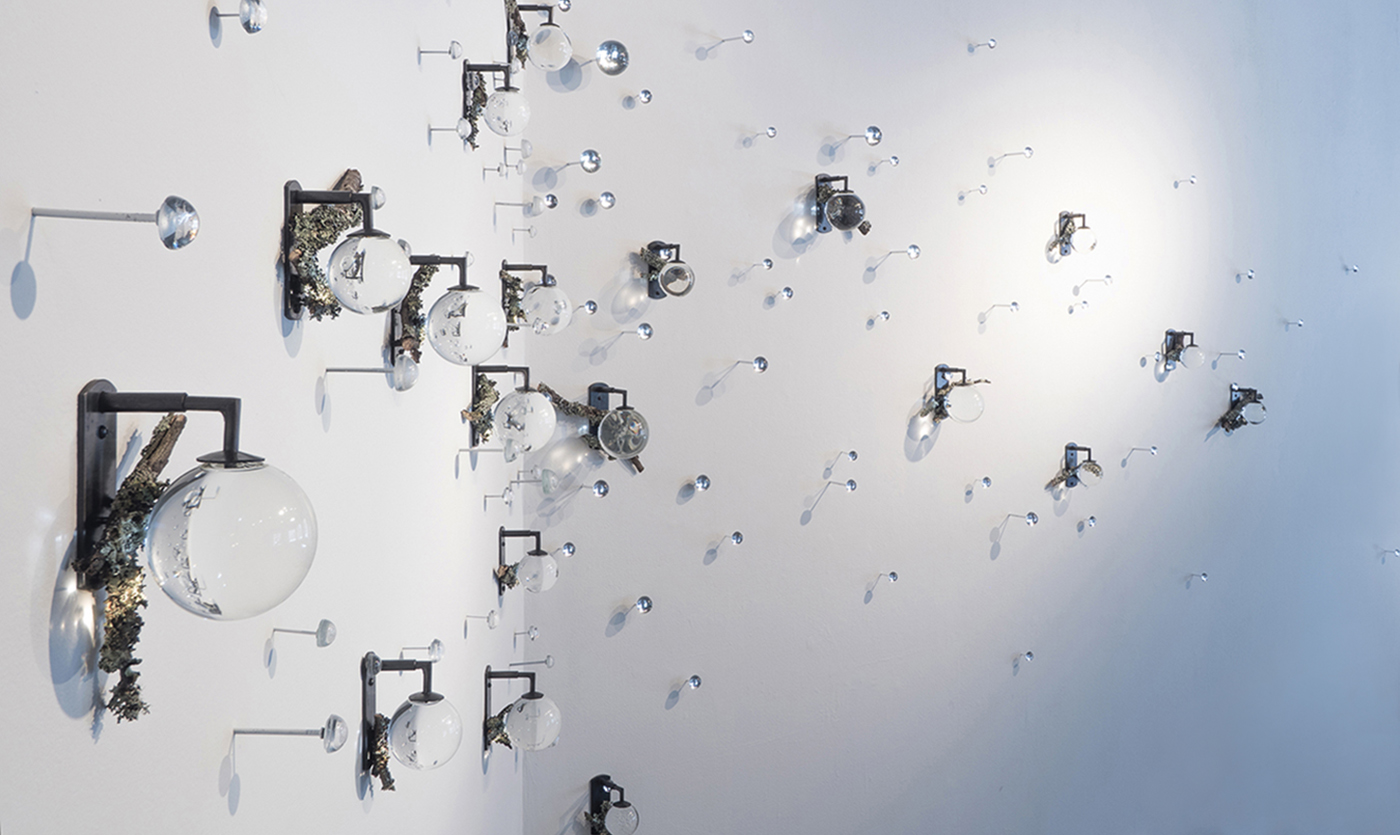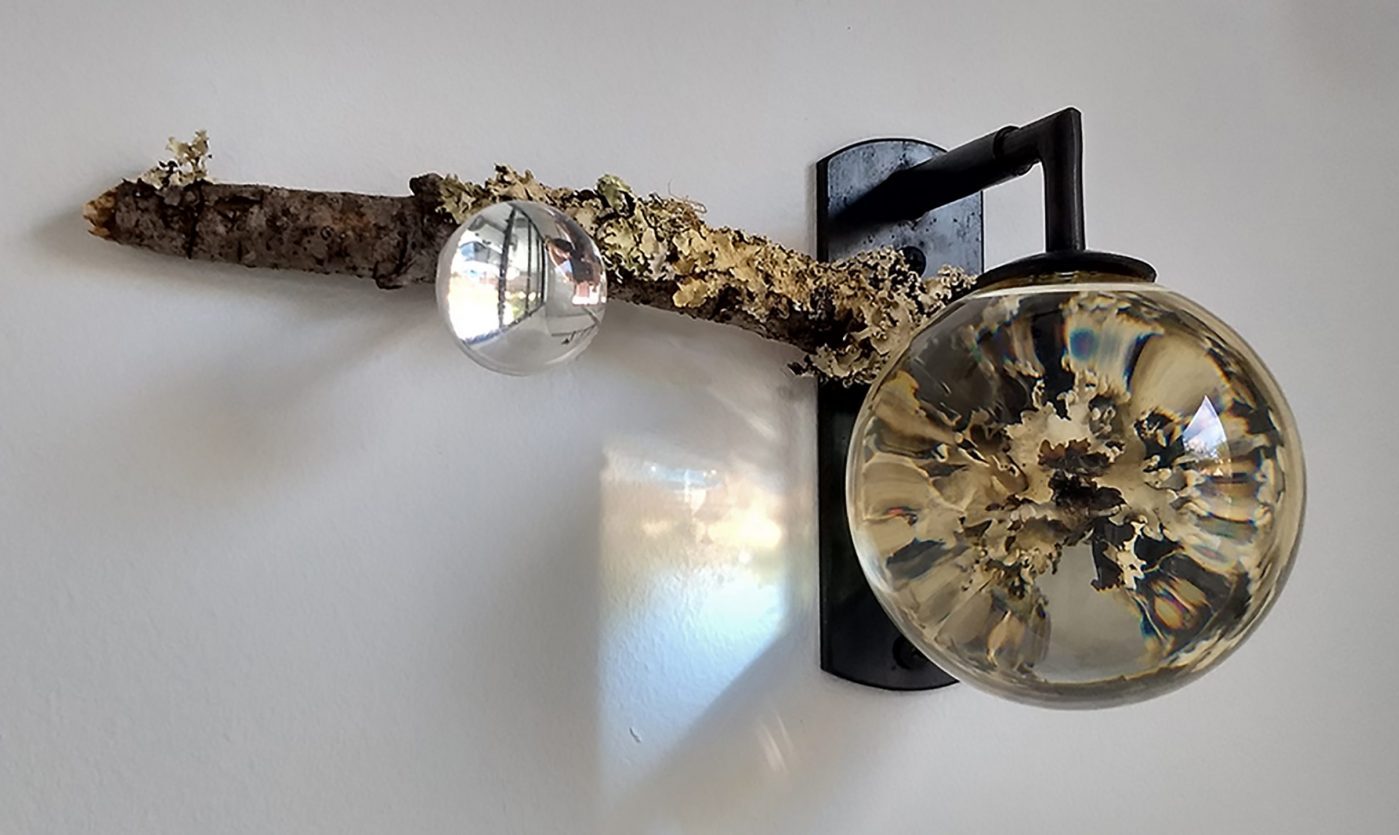The curled, frilly form of Parmotrema lichen is a natural example of the true shape of the space in which we find ourselves, so-called hyperbolic space. The shortest distance between two points, therefore, is never a straight line as we’re taught, but rather, a curved one. From a young age, Westerners learn to live within the city grid, applying order to the not-quite-fixed world of natural forms and systems, and extending it into their worldviews.
Our perceptions are also defined by our expectations, and our attachment to human scale. In this piece, the refractive property of water—within globes of hand-blown glass—acts as a lens, magnifying what lies behind it while projecting the moving image of what lies before it. The scale of these elements exaggerates the same phenomena as morning dew, clouds, and the water in the air we breathe. A Living Model of Hyperbolic Space offers a glimpse into neurodivergent sense perception, which, in the artist’s case, shifts or collapses perceptual scales. Its elements serve as devices for seeing through another way of knowing.
Inspired by Margaret Wertheim’s A Field Guide to Hyperbolic Space: An Exploration of the Intersection of Higher Geometry and Feminine Handicraft, this piece was developed at Djerassi Resident Artist Program, where its lichen was harvested with guidance from the California Lichen Society.

